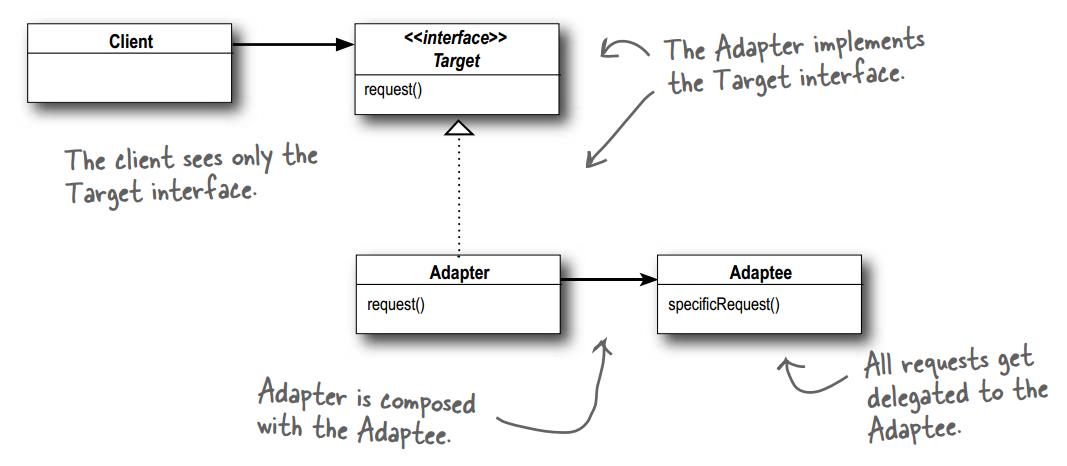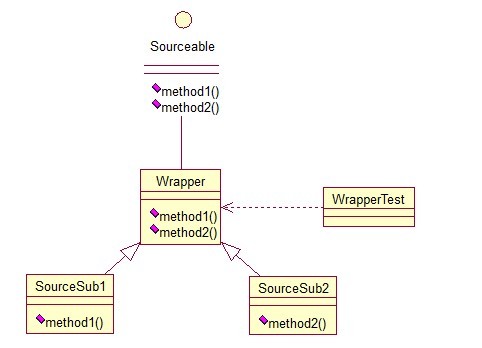适配器模式(Adapter Pattern)
Posted yvhqbat
tags:
篇首语:本文由小常识网(cha138.com)小编为大家整理,主要介绍了适配器模式(Adapter Pattern)相关的知识,希望对你有一定的参考价值。
1. 适配器模式定义
适配器模式将某个类的接口转换成客户端期望的另一个接口表示,目的是消除由于接口不匹配所造成的类的兼容性问题。

类图:

2. 三类适配器模式
主要分为三类:类的适配器模式、对象的适配器模式、接口的适配器模式。
总结一下三种适配器模式的应用场景:
类的适配器模式:当希望将一个类转换成满足另一个新接口的类时,可以使用类的适配器模式,创建一个新类,继承原有的类,实现新的接口即可。
对象的适配器模式:当希望将一个对象转换成满足另一个新接口的对象时,可以创建一个Wrapper类,持有原类的一个实例,在Wrapper类的方法中,调用实例的方法就行。
接口的适配器模式:当不希望实现一个接口中所有的方法时,可以创建一个抽象类Wrapper,实现所有方法,我们写别的类的时候,继承抽象类即可。
2.1 类的适配器模式
核心思想就是:有一个Source类,拥有一个方法,待适配,目标接口时Targetable,通过Adapter类,将Source的功能扩展到Targetable里。
//测试
public class ClassAdapterPatternTest
public static void main(String[] args)
Targetable target=new Adapter();
target.method1();
target.method2();
//原类
class Source
public void method1()
System.out.println("this is original method!");
//新接口,供client使用
interface Targetable
//与原类方法相同
public void method1();
//添加的方法
public void method2();
//Adapter适配器类,继承自原类,实现接口。
class Adapter extends Source implements Targetable
@Override
public void method2()
System.out.println("this is the targetable method!");
运行结果:
this is original method!
this is the targetable method!2.2 对象的适配器模式
基本思路和类的适配器模式相同,只是将Adapter类作修改,这次不继承Source类,而是持有Source类的实例,以达到解决兼容性的问题。
public class Wrapper implements Targetable
private Source source;
public Wrapper(Source source)
super();
this.source = source;
@Override
public void method2()
System.out.println("this is the targetable method!");
@Override
public void method1()
source.method1();
//测试
public class AdapterTest
public static void main(String[] args)
Source source = new Source();
Targetable target = new Wrapper(source);
target.method1();
target.method2();
2.3 接口的适配器模式
接口的适配器:有时我们写的一个接口中有多个抽象方法,当我们写该接口的实现类时,必须实现该接口的所有方法,这明显有时比较浪费,因为并不是所有的方法都是我们需要的,有时只需要某一些,此处为了解决这个问题,我们引入了接口的适配器模式,借助于一个抽象类,该抽象类实现了该接口,实现了所有的方法,而我们不和原始的接口打交道,只和该抽象类取得联系,所以我们写一个类,继承该抽象类,重写我们需要的方法就行。

以上是关于适配器模式(Adapter Pattern)的主要内容,如果未能解决你的问题,请参考以下文章